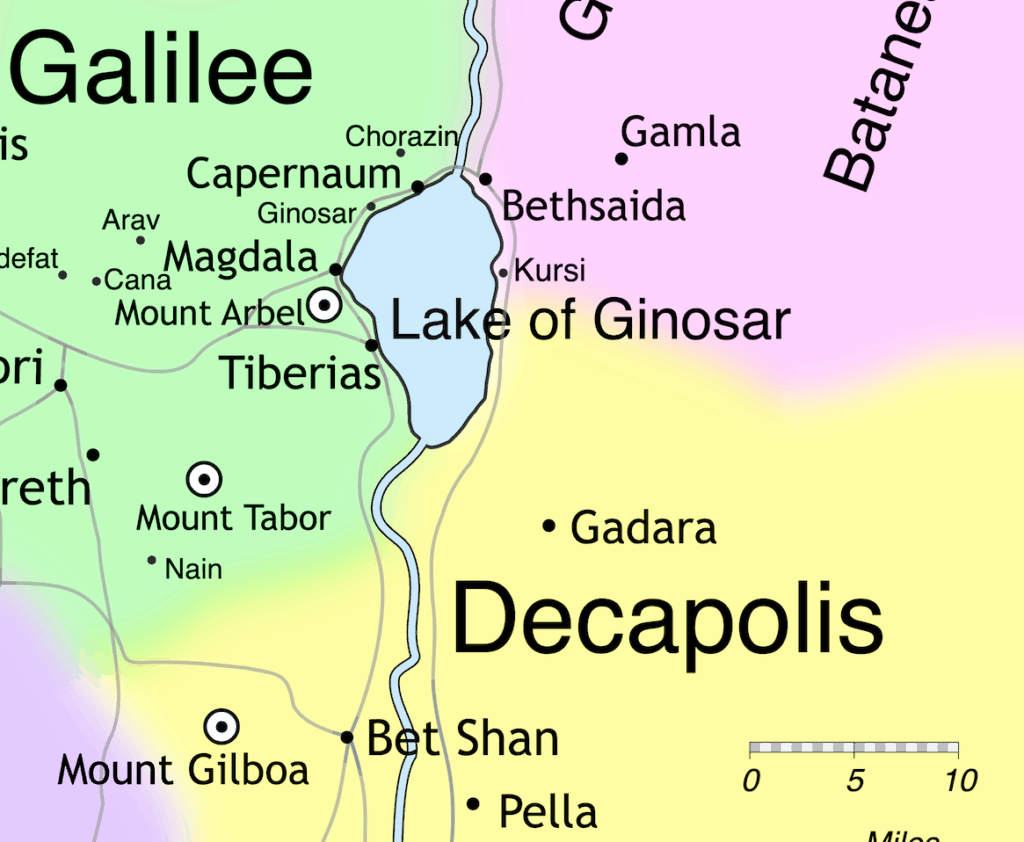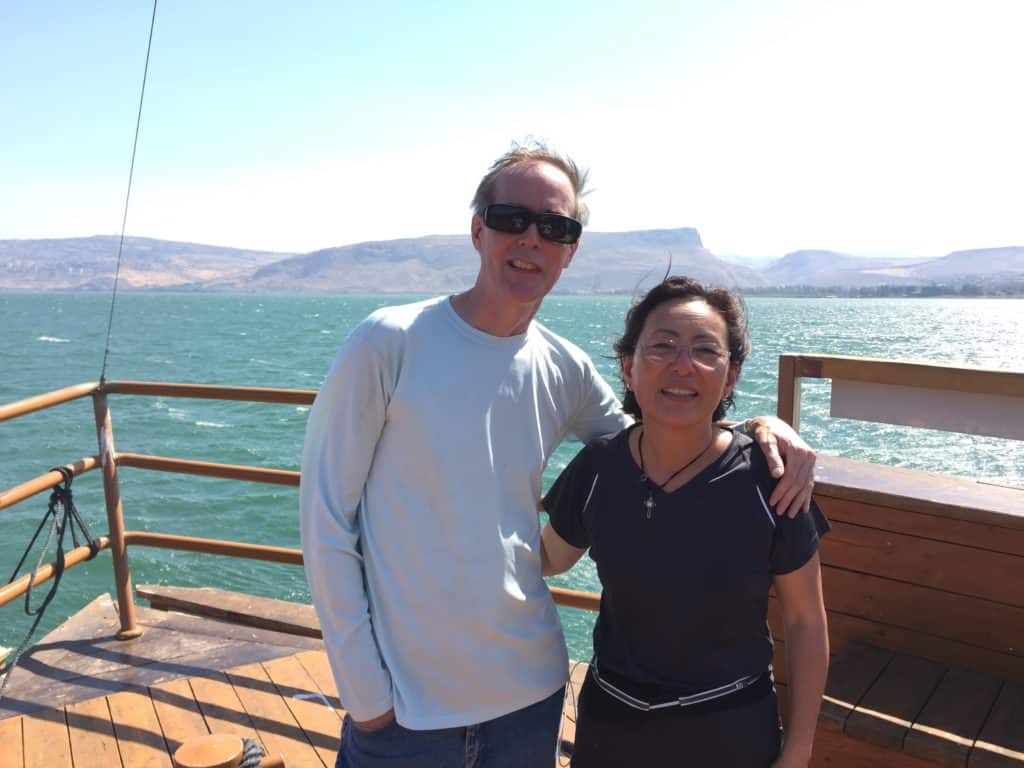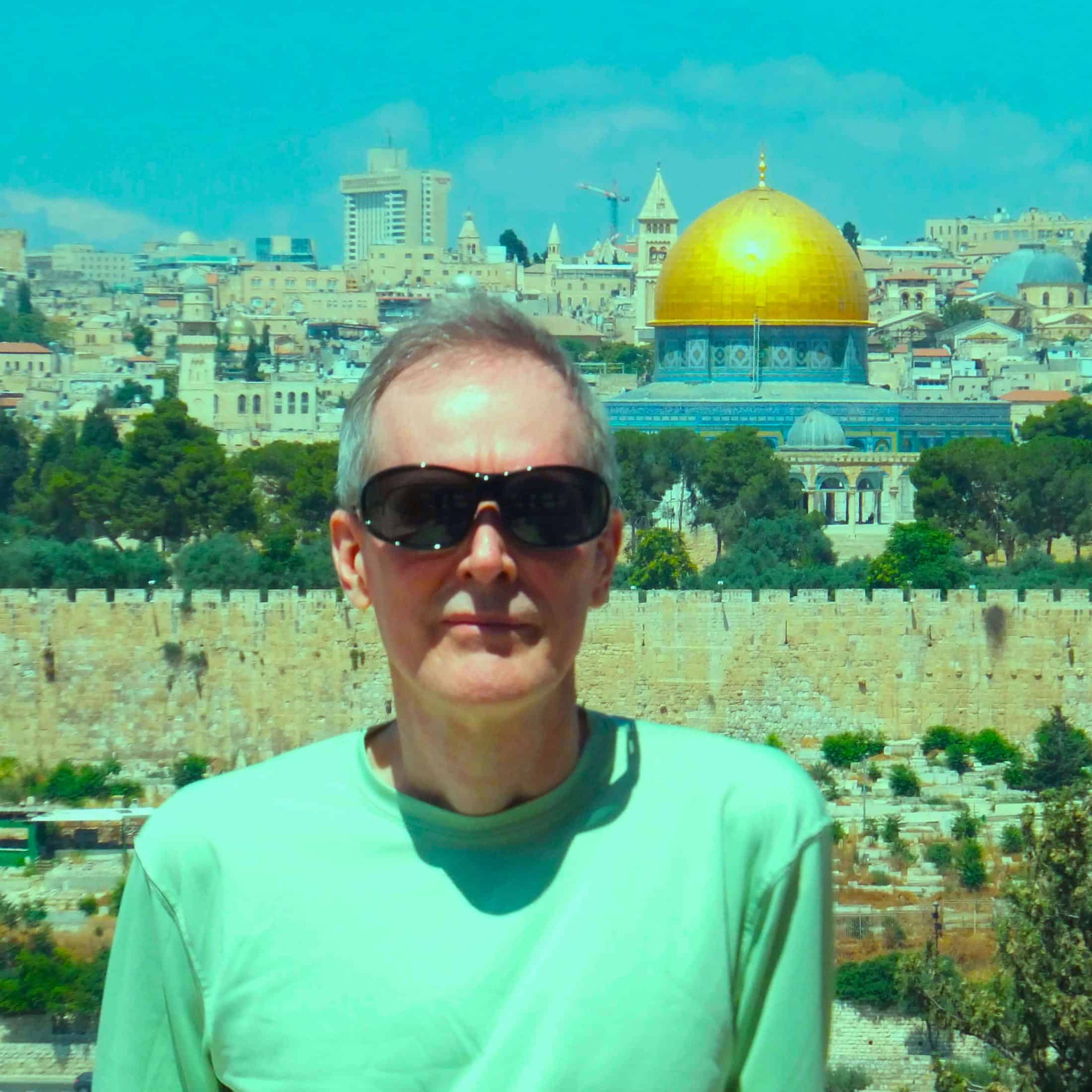Jesus spent an enormous amount of time around the Sea of Galilee. The remarkable thing is that the Sea today looks very similar to the way it did two thousand years ago.
Here’s a snip of a map that I drew for my novel Son of Mary, showing the area around the Sea of Galilee where Jesus spent most of his time. (In the book, I call it the Lake of Ginosar, which I think is more likely what the locals called it in the time of Jesus.)

A Few Facts About the Sea of Galilee
- The Sea of Galilee is not really a sea. It’s a fair-sized lake, about 8 miles wide at its broadest point.
- It’s called the “Sea of Galilee” in Mark 1:16 and Mark 7:31, in Matthew 4:18 and Matthew 15:29, and in John 6:1.
- But it’s also called the “Sea of Tiberias” in John 6:1, in honor of the emperor Tiberius. I don’t know why the sea’s name is spelled differently than the emperor’s, but it is.
- It’s also called the “Lake of Genessaret” in Luke 5:1, presumably named after the village of Genessaret mentioned in Mark 6:53 and Matthew 14:34. There is a modern-day kibbutz on that site named Ginosar, which is the Hebrew spelling of the word transliterated Genesserat in the Bible.
Places Mentioned in the Story of Jesus
If you look at the map, you’ll see that it’s thick with places named in the gospels:
- Capernaum was the headquarters of Jesus. It appears that at least four of his disciples lived there (Peter, Andrew, James, and John), and probably a couple of others (Matthew and Thomas). Capernaum was one of the ten largest villages in Galilee, with a population estimated at a whopping level of about 1500 to 2000.
- Bethsaida was just a few miles east of Capernaum. It appears that Peter and Andrew may have been born there, and two other disciples lived there (Philip and Nathanael).
- South of Bethsaida a few miles on the east side of the lake was the small gentile village of Kursi. This is the traditional site at which Jesus healed a demonized man and there was an unfortunate episode in which about two thousand pigs got drowned. (Mark 5:1-17).
- South of Capernaum a few miles is the village of Ginosar, where Jesus and his disciples landed after the story of the feeding of the five thousand (Mark 6:53).
- South of Ginosar a few more miles is the large and important town of Magdala, the hometown of Mary Magdalene. This town was even larger than Capernaum, and I’d estimate its population at up to 5000.
- Looming above Magdala was the asymmetrical mountain, Mount Arbel. This mountain is not mentioned directly in the gospels, but it’s the key landmark of the entire region. We sometimes read in the gospels that Jesus went up on a mountain. Some of these occasions may be referring to Mount Arbel, because it’s an obvious place to go if you know this area well.
- South of Magdala was the city of Tiberias, the capital of Galilee and therefore the site of a palace of Herod Antipas, who was the ruler over Galilee during the time of Jesus. When we read in Mark 3:6 that certain Pharisees got together with “the Herodians,” these Herodians were court followers of Herod Antipas, and they lived for a good part of the year in Tiberias. The city was the largest in Galilee, with a population of about 10,000.
Mount Arbel as a Landmark
There’s a lot more to say about the area around the Sea of Galilee, but I’ll save some for another blog post. I’ve spent a lot of time in the area, and my wife and I once worked for a week on the archaeological excavation at Magdala, in the shadow of Mount Arbel.
So I’ll just add this one point. Mount Arbel absolutely dominates the Sea of Galilee. From the top, you can see the entire lake, from north to south and all the way across to the eastern side.
And no matter where you are on the shores around the lake, you can see Mount Arbel. When Peter and Andrew and James and John went fishing on the lake, they could never be lost. No matter where they were on the lake, all they had to do was find Mount Arbel and they instantly knew where they were.
Here’s a picture of me and my wife, taken a few years ago on a boat trip on the lake. The view is looking west. Mount Arbel is the lopsided peak directly behind my wife’s head.

You can be sure of one thing. When you’re looking at Mount Arbel, you’re seeing a sight that looks exactly the same as it did when Jesus sat in a boat on the lake and looked toward the mountain.
